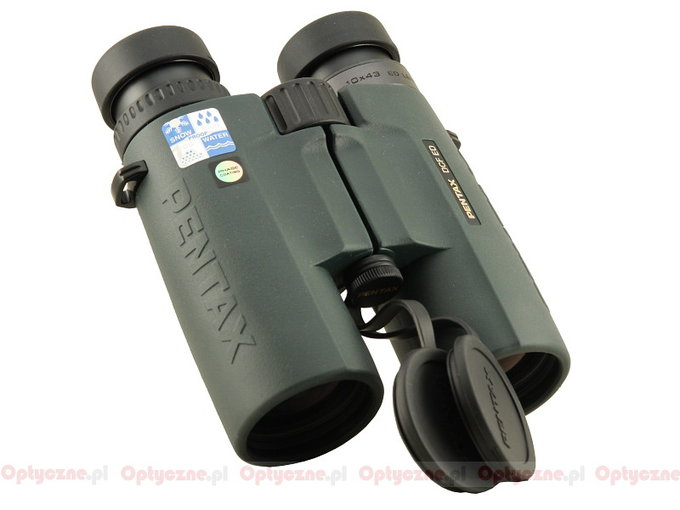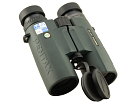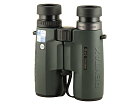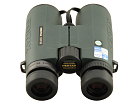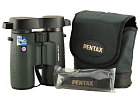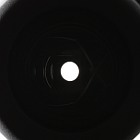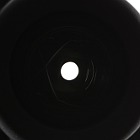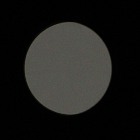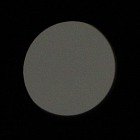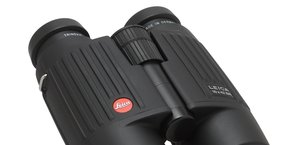Pentax DCF ED 10x43
The metal casing of the binoculars is padded with high quality rubber, nitrogen-filled and fully waterproof. The buyer gets two caps, a case and a strap as accessories. This pair of binoculars comes with a 25-year warranty of the producer.
| Magnification | Lens diameter | Angular field of view | Prisms | Eye relief | Weight | Price |
|---|---|---|---|---|---|---|
| 10 | 43 | 105/1000(6o) | BaK4 | 17 mm | 730 g | 3399 PLN |
Summary
Pros:
- solid and compact casing,
- good transmission,
- correct colour rendering,
- chromatic aberration well-corrected,
- negligible astigmatism,
- splendidly corrected distortion,
- exit pupils on dark background,
- low brightness loss on the edge of the field of vision,
- high quality of prisms and coatings,
- clean, correctly blackened inner tubes,
- long warranty perriod.
Cons:
- significantly truncated exit pupils.
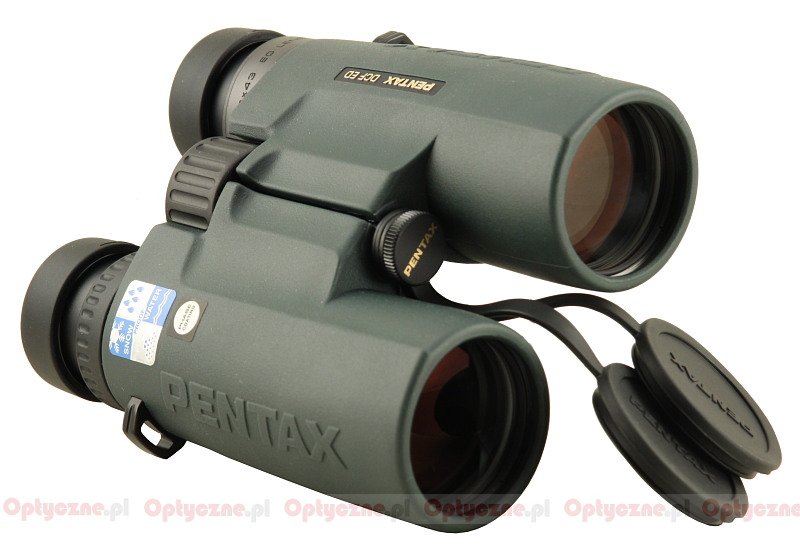 |
As the lists of pros and cons show very clearly the Pentax ED 10x43 has only one but a very painful slip-up which is connected to small prisms – they make the exit pupils very truncated. The binoculars lost as many as 8 points in this category. If it hadn’t been for this slip-up the device would have been given 140 points – with such a score it would have been one of the most interesting choices in the 10x42 class. We must emphasize, though, that the current result of 132 points is still very good. The problem is that similar number of points was awarded to many other pairs of binoculars which cost more or less the same and were produced by as reputable companies as Pentax. It’s enough to mention here such instruments as the Meopta Meostar, the Minox HG 10x43 BR MIG, the Kahles, the Kowa or the Swarovski Habicht. Undoubtedly select company - without the exit pupils slip-up the Pentax could have offered a bit more than them. Unfortunately, these exit pupils being as they are, might make some prospective customers buy the product of a rival company.
When it comes to other achievements the Pentax can be only praised. The binoculars are put in a compact, handy casing, the device features ED glass in objectives which works very well; the astigmatism and distortion are corrected in a splendid way and the coma – quite well. The coatings are very efficient, providing good transmission level, natural colours, and damping down unwanted flares. If it wasn’t for these wretched pupils we would deal here with a real market hit.
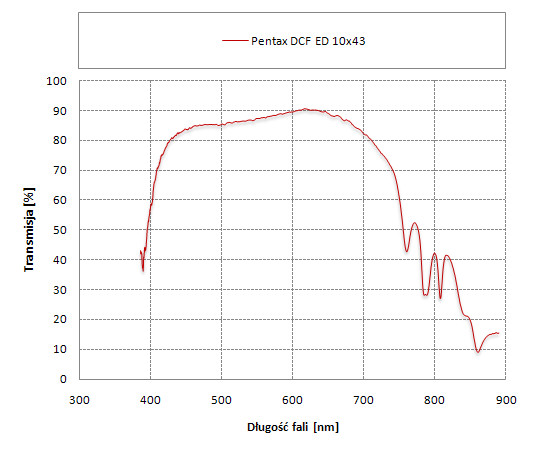 |




